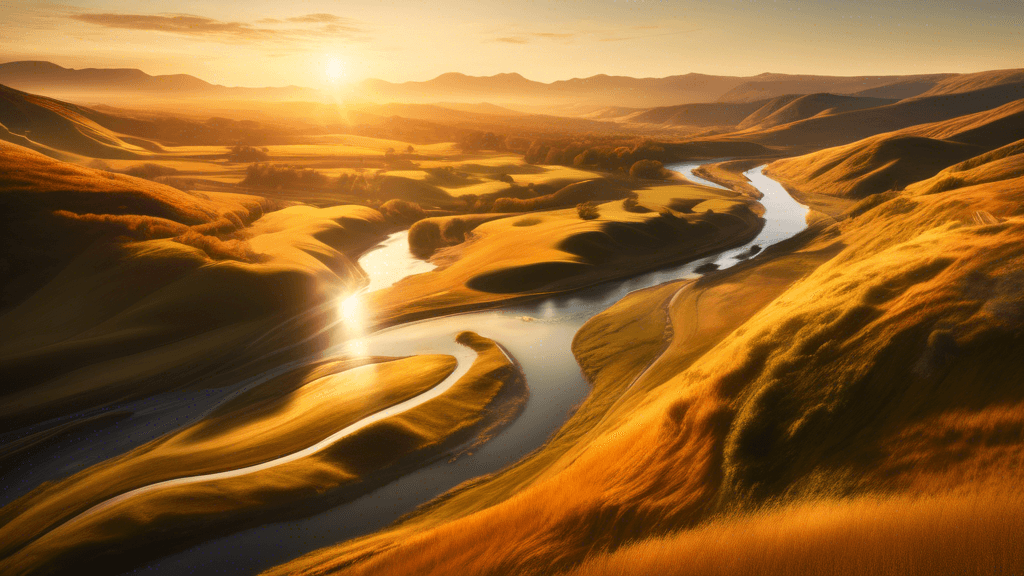
Illuminating Vistas: How Light Transforms Landscape Photography
Share
The Transformative Power of Light in Landscape PhotographyUnderstanding the Basics of Light in Photography
Before delving into the specifics of how light transforms a landscape, it's crucial to understand some key concepts about light in photography. Light affects color, texture, contrast, and the overall mood of the photograph. Photographers classify light based on the time of day, weather conditions, and direction, and these classifications greatly influence the artistic decisions a photographer makes.
The Golden and Blue Hours
One of the most magical times for any landscape photographer is during the 'Golden Hour'—the period shortly after sunrise or before sunset. The light during these times is soft, warm, and diffused, casting long shadows and producing a range of hues that can evoke an array of emotions from the viewer. This light can add a sense of peace and tranquility or awe and excitement to the landscape.
Conversely, the 'Blue Hour', which occurs just before sunrise and just after sunset, offers a cooler, serene light that is often used to convey mystery or melancholy. These hours are beloved by photographers for their ability to bring a different dimension to the landscape, highlighting features that are not as apparent during the day.
The Impact of Weather on Landscape Photography
Weather conditions can dramatically affect lighting and, consequently, the mood and impact of a landscape photograph. For instance, the diffused light on an overcast day can enhance colors and reduce shadows, making it perfect for capturing the vibrancy of autumn leaves or the intricate details of a rocky terrain.
Contrastingly, the dramatic and unpredictable lighting that comes with stormy weather can result in powerful, moody photographs that are loaded with emotion. Capturing the moment when a storm breaks or sunlight pierces through dark clouds can be both challenging and rewarding.
Directional Light and Its Effects
Directional light refers to light that comes from a particular direction. This type of lighting can be used to shape how a scene is viewed and can add dimension through shadows and highlights. Side lighting, for example, can enhance texture and depth, making flat landscapes appear more dynamic and three-dimensional.
Example of Light Transformed Landscape Photography
Consider a photograph of a simple mountain range at noon versus the same scene shot during the golden hour. In harsh noon lighting, the mountains may appear flat and uninteresting, with over-exposed highlights and lack of detail. However, under the warm glow of the setting sun, those same mountains might be transformed into a breathtaking scene with enhanced textures and a gradient of colors that invite the viewer into the photograph.
The angle of light touching the earth can redefine the landscape,
Working with natural light, especially in landscape photography, poses significant challenges. Light is unpredictable and uncontrollable. A landscape photographer must have the patience and flexibility to adapt to rapidly changing conditions to capture that perfect moment.
However, the rewards of mastering light are immense. A well-lighted photograph can tell a story, evoke emotions, and even inspire action towards environmental conservation. It can transform the mundane into the sublime, and in doing so, remind us of the sheer beauty of the natural world around us. paragraphs>
The interaction between light and landscape does more than produce striking images; it also plays a crucial role in the way we connect with our environment. By showcasing the beauty of natural landscapes through various lighting conditions, photographers not only share their vision but also help to raise awareness about the importance of preserving these environments.
In conclusion, the transformative power of light in landscape photography cannot be overstated. It is an essential tool that, when harnessed skillfully, can elevate a simple scene into a profound visual narrative. As we move forward, let us not only strive to master the technical aspects of photography but also to use our images to inspire, educate, and advocate for the conservation of our precious landscapes. span-panel>
Are you ready to enhance your own photography by understanding and utilizing light more effectively? Why not step outside during the next golden or blue hour and see how light changes the landscape around you?
Challenges and Rewards
Encouraging Exploration and Protection Through Light





